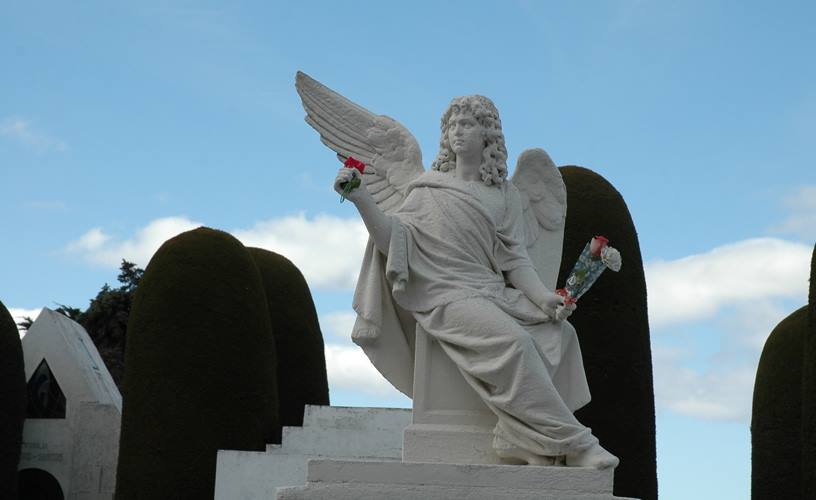OUR HISTORY
The Punta Arenas Cemetery, founded in 1894, covers 8 hectares and is internationally recognized as one of the 10 most beautiful in the world. It was declared a National Historic Monument in 2012. It is notable for its mausoleums from various foreign colonies such as Italy, Spain, Croatia, France, and Portugal, as well as sections dedicated to Germany and the United Kingdom. It also houses graves from charitable organizations like the Red Cross and Mutual Aid Societies.
During the 1890-1900 decade, Punta Arenas experienced a boom in construction, with iconic buildings such as the Cathedral, the Government Palace, and the Municipal Theater. In this context, Sara Braun promoted the creation of a monumental portico for the cemetery, built between 1918 and 1923 in an eclectic style with neobaroque details. The portico includes a central chapel and is decorated with "The Angels of Silence."
Visiting this cemetery offers a unique experience and a pleasant memory of the history and beauty of Punta Arenas.
CAPTURED MOMENTS








The avenues of century-old trees planted in the late 1800s with 639 imposing cypress trees of Lawson, English, and macrocarpa species were not a coincidence, but rather followed an ancient European tradition, influenced by Greek and Roman mythology. In these cultures, the elevated and leafy shape of the cypresses, whose trunks rise to the sky, symbolized the transit of the souls of loved ones to the heavens, guiding them on their spiritual journey.
Sara Braun
G o o g l e
View reviewsThis cemetery houses the history of Patagonia, highlighting the graves and mausoleums of charitable organizations that buried those who arrived alone to populate the city. Chileans from Chiloé, Europeans, and natives left part of their lives reflected in this place.
